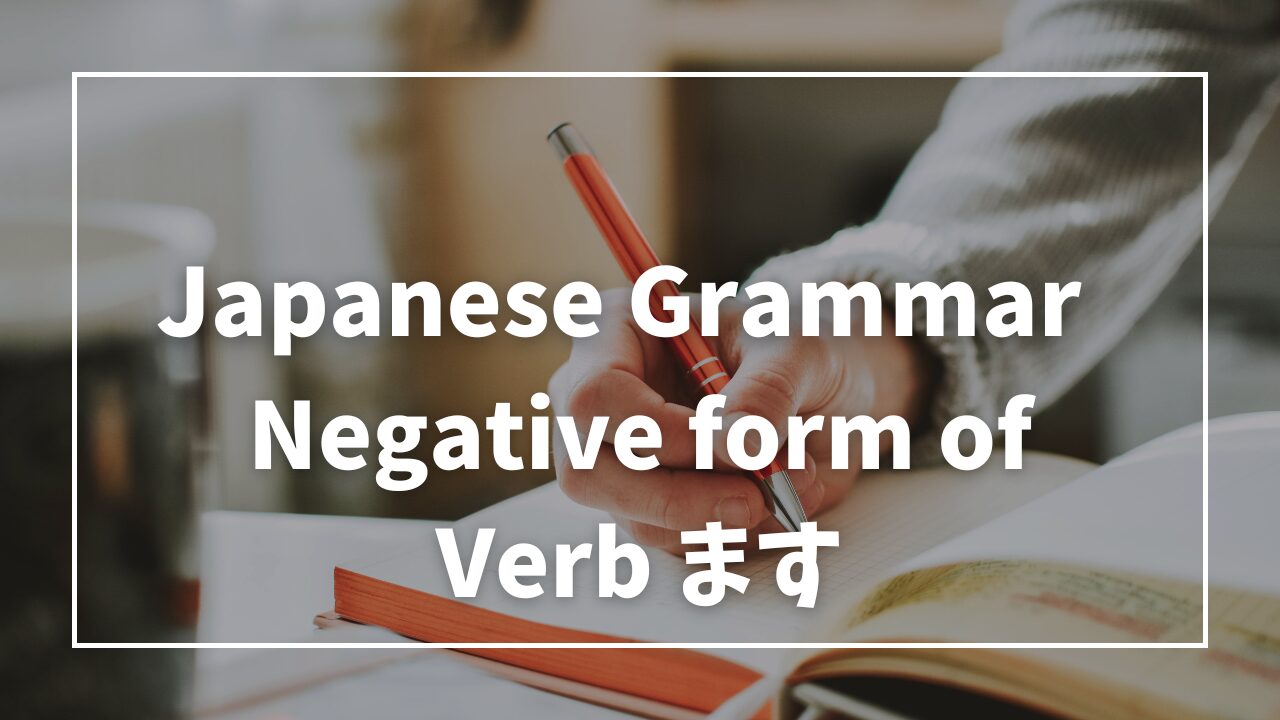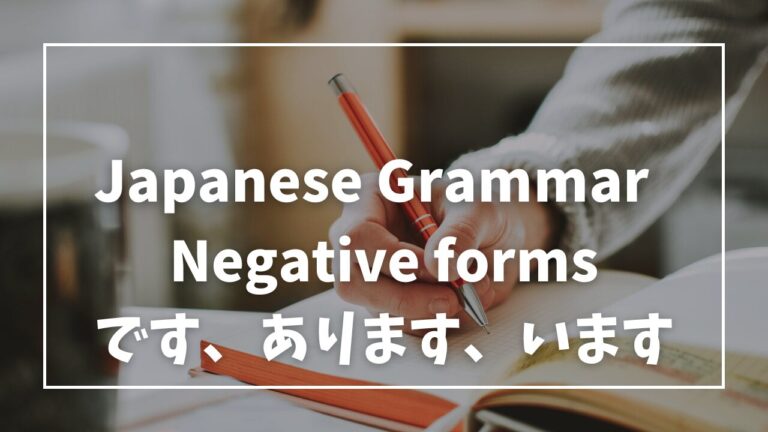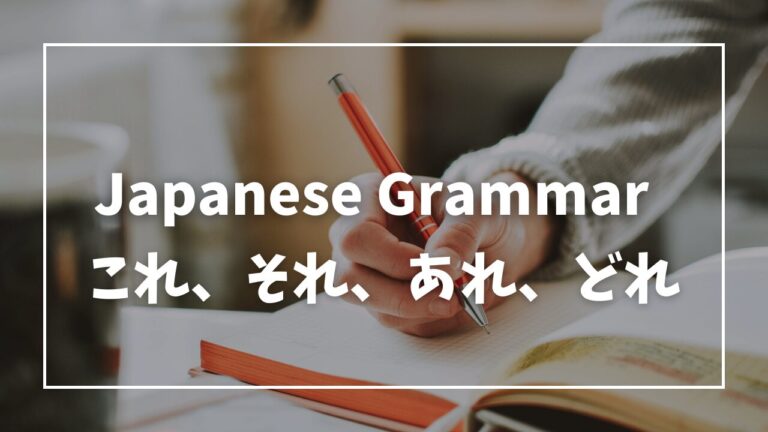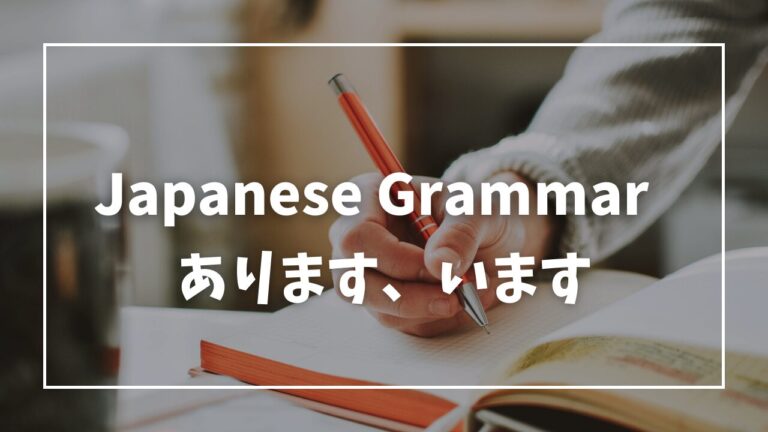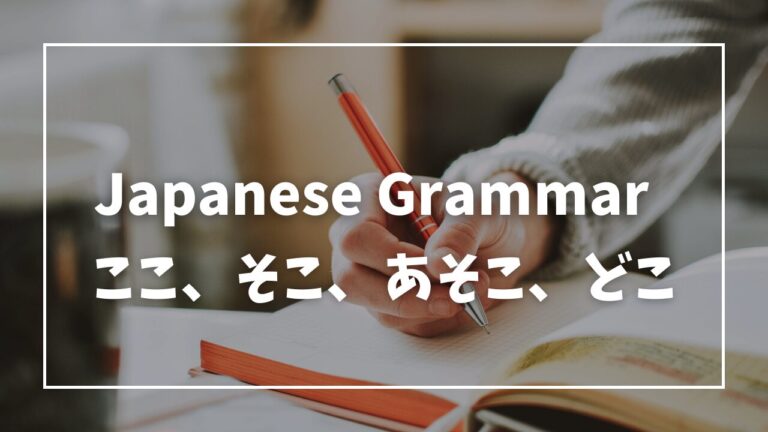Understanding the Negative ます Form in Japanese: A Beginner’s Guide
Learning to express what you don’t do is just as important as expressing what you do do when studying Japanese. The negative ます (masu) form is one of the first grammar points beginners encounter, and mastering it opens up a whole new dimension of expression. This article will guide you through the formation and usage of the negative ます form, with plenty of examples to help solidify your understanding.
What is the ます Form?
Before diving into the negative, let’s briefly review what the ます form is. The ます (masu) form is the polite present affirmative form of Japanese verbs. It’s commonly used in formal situations, when speaking with people you don’t know well, or in professional contexts. For example:
- たべます (tabemasu) – I eat/will eat
- はなします (hanashimasu) – I speak/will speak
The Negative ます Form: Expressing What Doesn’t Happen
The negative ます form allows you to express that an action is not performed. This is equivalent to “do not” or “will not” in English. The polite negative form ends with ません (masen) instead of ます (masu).
How to Conjugate Verbs into the Negative ます Form
Japanese verbs fall into three main categories: Group 1 (Ichidan), Group 2 (Godan), and Irregular verbs. Each group follows different conjugation patterns.
Group 1 (Ichidan) Verbs
Ichidan verbs, also known as “ru-verbs,” are the simplest to conjugate.
Conjugation Rule:
- Remove る (ru) from the end of the verb
- Add ません (masen)
Examples:
- たべる (taberu) → たべません (tabemasen) – “don’t eat”
- みる (miru) → みません (mimasen) – “don’t see/watch”
- おきる (okiru) → おきません (okimasen) – “don’t wake up”
- ねる (neru) → ねません (nemasen) – “don’t sleep”
- いれる (ireru) → いれません (iremasen) – “don’t put in”
Notice how straightforward this is—you simply remove the final る and add ません.
Group 2 (Godan) Verbs
Godan verbs, also called “u-verbs,” require a bit more attention to conjugate correctly.
Conjugation Rule:
- Change the last kana (which always ends with an “u” sound) to its corresponding “i” sound
- Add ません (masen)
This conversion follows the Japanese consonant sound pattern:
- う (u) → い (i)
- く (ku) → き (ki)
- ぐ (gu) → ぎ (gi)
- す (su) → し (shi)
- つ (tsu) → ち (chi)
- ぬ (nu) → に (ni)
- ぶ (bu) → び (bi)
- む (mu) → み (mi)
- る (ru in Godan verbs) → り (ri)
Examples:
- のむ (nomu) → のみません (nomimasen) – “don’t drink”
- はなす (hanasu) → はなしません (hanashimasen) – “don’t speak”
- あるく (aruku) → あるきません (arukimasen) – “don’t walk”
- かう (kau) → かいません (kaimasen) – “don’t buy”
- よむ (yomu) → よみません (yomimasen) – “don’t read”
- かく (kaku) → かきません (kakimasen) – “don’t write”
- およぐ (oyogu) → およぎません (oyogimasen) – “don’t swim”
- まつ (matsu) → まちません (machimasen) – “don’t wait”
- しぬ (shinu) → しにません (shinimasen) – “don’t die”
- あそぶ (asobu) → あそびません (asobimasen) – “don’t play”
- とる (toru) → とりません (torimasen) – “don’t take”
Irregular Verbs
Japanese has only two main irregular verbs, but they’re extremely common.
Conjugation:
- する (suru) → しません (shimasen) – “don’t do”
- くる (kuru) → きません (kimasen) – “don’t come”
These verbs don’t follow the regular patterns, so you’ll need to memorize their conjugations.
Compound Verbs with する
Many Japanese compound verbs are formed using する (suru). These follow the same pattern as する itself:
- べんきょうする (benkyou suru) → べんきょうしません (benkyou shimasen) – “don’t study”
- りょうりする (ryouri suru) → りょうりしません (ryouri shimasen) – “don’t cook”
- れんしゅうする (renshuu suru) → れんしゅうしません (renshuu shimasen) – “don’t practice”
Common Pitfalls and Tips
Distinguishing Ichidan vs. Godan Verbs
One of the trickiest aspects for beginners is determining whether a verb ending in る (ru) is an Ichidan (Group 1) or Godan (Group 2) verb. While there are some general patterns, there are exceptions:
- Most verbs with either い (i) or え (e) before the final る are Ichidan verbs
- たべる (taberu), みる (miru), おきる (okiru), etc.
- Most verbs with other vowels (あ, う, お) before る are Godan verbs
- とる (toru), はしる (hashiru), わかる (wakaru), etc.
However, there are exceptions like かえる (kaeru – to return), which is a Godan verb despite having え before る.
Practice Makes Perfect
The key to mastering the negative ます form is consistent practice. Try making simple negative sentences with verbs you commonly use:
- わたしは にほんごを はなしません。(Watashi wa nihongo o hanashimasen.) – “I don’t speak Japanese.”
- まいにち コーヒーを のみません。(Mainichi koohii o nomimasen.) – “I don’t drink coffee every day.”
- しゅうまつに はたらきません。(Shuumatsu ni hatarakimasen.) – “I don’t work on weekends.”
Using the Negative ます Form in Conversation
Basic Sentence Structure
The basic structure for sentences using the negative ます form is:
[Subject] は [Object] を [Verb in negative ます form].
For example:
- わたしは テレビを みません。(Watashi wa terebi o mimasen.) – “I don’t watch TV.”
- かれは にくを たべません。(Kare wa niku o tabemasen.) – “He doesn’t eat meat.”
Responding to Questions
The negative ます form is especially useful when answering questions:
Question: コーヒーを のみますか。(Koohii o nomimasu ka?) – “Do you drink coffee?” Response: いいえ、のみません。(Iie, nomimasen.) – “No, I don’t drink (it).”
Expressing Habits
You can use the negative ます form to talk about habitual actions that you don’t do:
- まいにち あさごはんを たべません。(Mainichi asagohan o tabemasen.) – “I don’t eat breakfast every day.”
- にほんごの しんぶんを よみません。(Nihongo no shinbun o yomimasen.) – “I don’t read Japanese newspapers.”
Conclusion
The negative ます form is an essential building block in your Japanese language journey. By mastering this form, you’ve gained the ability to express what you don’t do, a fundamental aspect of any language. Remember that consistent practice is key—try to incorporate negative verb forms into your daily Japanese practice.
As you continue your studies, these conjugation patterns will become second nature, allowing you to focus more on expanding your vocabulary and tackling more complex grammar structures. Keep practicing, and don’t be afraid to make mistakes—they’re an important part of the learning process!
がんばってください!(Ganbatte kudasai!) – “Good luck!”

